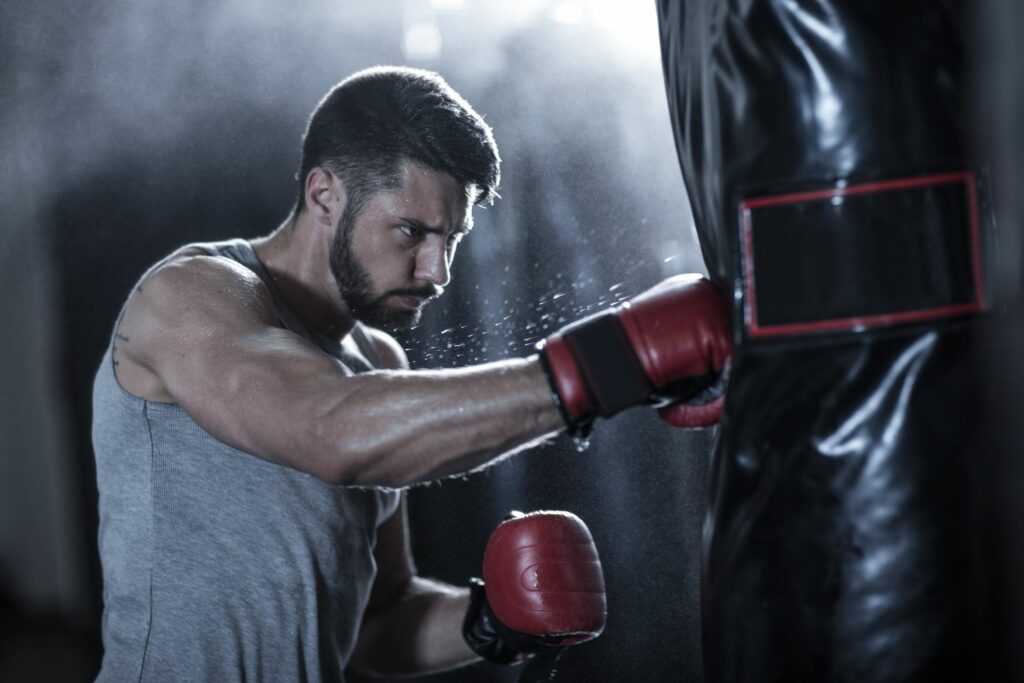
Article by John Matich
It might surprise you to know that Mike Tyson never did heavy-weights. He never ‘hit the gym’, ‘pumped iron’ or even lifted a dumbbell.
Instead, under the tutelage of old-school boxing maestro Cus D’Amato, he went back to traditional boxing training techniques, and turned himself from being a stocky young kid into the youngest heavyweight champion of all time.
But what were these traditional techniques, and can we start using them ourselves?
If you go into any boxing gym, you will notice that they generally train in four key ways. Almost every training session you go to will take you through these four fundamentals, as they lie at the heart of traditional boxing training, and are essential for creating a competent fighter.
But here’s some I noticed about them:
Except sparring (which requires an opponent) all of these training techniques can be done from your home. You don’t need a gym membership. You just need the right gear, and the will to put it to good use.
This article shows you exactly what gear you need and how exactly to use it to transform yourself into a competent fighter.
Let’s dive in.
The Three Fundamentals of Boxing Training
Other than sparring, there are three fundamentals of boxing training that any beginner must master.
Road running
Boxing is one of the most intensive sports for your fitness on the planet. To be a competent boxer you have to able to carry your body weight around and exert it for long periods. Your body has to have a lot of ability to move on the toes, dance around the ring, and constantly throw shots.
This is something you’ll be doing constantly for an entire fight because if you stay still, you’ll probably end up getting knocked out.
The most efficient way to build this kind of fitness is through road running.
Road running is as simple as it sounds. You put on some good running shoes (see below) and you start running until you reach your cardiovascular limit. Next time, you go a little further. And you keep doing this, until you hit much longer, more intensive runs across multiple kilometres.
Don’t overcomplicate it more than that. Just keep pushing your limit.
This simple exercise, more than any other, will develop your body’s ability to move around with plenty of energy spare.
Here’s some recommended shoes. I am a particular fan of Brooks running shoes…
Skipping
Some people are surprised to learn that skipping is such a crucial element of boxing training. After all, isn’t boxing meant to be “super manly”? In comparison skipping seems kinda silly, right?
Not exactly. Skipping, aside from building your endurance, is one the best ways to develop rhythm and timing, all of which contributes to excellent footwork. And as the saying goes:
“Footwork wins fights.”
As much as you’d like to think your ability to box comes from having muscular arms, it actually has a lot more to do with your ability to use your feet, stay in and out of range, and be able to snap power up through your legs and hips and into your arms. And you need to be doing this all at once.
This takes exceptional coordination, timing, and rhythm. It isn’t easy. Try moving around and throwing complex combinations. You’ll quickly lose control of yourself.
Skipping helps to fix this. By practising the simple art of skipping, you learn to master the foundation of footwork that you’ll use when fighting. But better yet, it’s fun. Once you’ve got basic skipping technique down, you can move on to more complex tricks like double-unders.
Aim for 5 x 3 minute sessions with 30 seconds rest.
Here are some skipping ropes which I highly recommend…
Heavy bag
When it comes to boxing training, the heavy bag is your best friend. It’s the anvil where you craft your ability to punch harder and faster, with better combinations, better accuracy, and more devastating power.
It will work your coordination and your fitness as you’ll be snapping your feet, shifting and pivoting your body weight, and moving around the bag, all while you try to unleash as much power as you can from your body in big shots and quick, snapping jabs.
While the heavy bag is usually the training people gravitate towards most, it benefits enormously from having rock-solid fitness and well-honed timing and rhythm. Because of this, I would always make sure you are locking down the other two fundamentals first.
Not as fun as slapping a heavy bag around, sure, but there’s a reason Lomachenko’s dad made him learn to dance before he’d let him step in the ring. Fitness, timing, and rhythm make a fighter. The punching power comes second.
Aim for 12 x 3 minute rounds with 30 seconds rest. Work on different angles, punches, and combinations. And remember, always stay moving.
Here are three very good heavy bags I recommend…
Final thoughts
You are going to need to go to a boxing gym for a sparring partner. There is no way around that, and it should always be something you’re aiming for as it helps take all the training you’ve done and convert it into actual boxing experience and skill.
However, running, skipping, and heavy bag work will give you a complete (and gruelling) work out that skyrockets your fitness, hones your rhythm and coordination, and has you developing incredible punching power.
I’d recommend starting with:
3 times per week:
- Skipping – 5 x 3 minutes, 30 seconds rest. (16 mins 30)
- Heavy bag – 8 -12 x 3 minutes, 30 seconds rest. (42 mins max)
- Run on your off days.
Happy training!
Related article: Best Boxing Gloves For Beginners

